When we came to Turkey, we didn’t know much about the country. In Europe, it is best known for its Mediterranean beaches and “Döner”, the most popular and universal street food of Europe. Looking at a map, you can quickly see that Turkey is in a perfect location to have high biodiversity. It is the crossroad between Europe, Asia and the Arabian Peninsula. But we still were not aware of what that entails. The first time we learned more about Turkey´s biodiversity was when we visited the Nature Research Society in Ankara. There, we saw a very simplified map of large mammals in Turkey. It mostly showed animals that we know well like wild boar, roe deer, red deer, wolves and brown. But in the South East on the Syrian border we saw two animals that baffled and amazed us: gazelles and hyenas.
When we think of gazelles and hyenas, we picture wide savannas of Africa. So, we did not expect them in Turkey. What we didn´t know is that the North Arabian Desert reaches close to Turkey and hence steppe and desert species occur along the Syrian border. So, from here on, we had a mission: find gazelles and hyenas in Turkey.
Spoiler: we found both!
Growing up with gazelles
Some internet research led us to the person that did not only have a crucial role in the increase of the gazelle populations in Turkey, but also in discovering that there are not one but two gazelle species in Turkey: Prof. Yaşar Ergün. He is a professor for Veterinary Science at the Hatay Mustafa Kemal Universitesi and part of “Hatay Tabiatı Koruma Derneği” (Hatay Nature Conservation Association).
Yaşar´s relation to the gazelles started when he grew up in the Gaziantep province. His grandmother told him stories about gazelles roaming the steppes here and even knew some local songs involving them. However, these were only stories from the past, as the goitered gazelle (Gazella subgutturosa) disappeared from Turkey after the 1950s except for a small population of 23 animals in the Sanliurfa province. Luckily, the government put them under protection in 1977 and started breeding programmes. Years later, Yaşar did his PhD in gynaecology of cows at the biggest cattle farm in Turkey in Sanliurfa. Coincidentally, the breeding centre for the goitered gazelle was just next to his accommodation, so he got to know them intimately.
The man that rediscovered the mountain gazelle
At the same time, the breeding programmes showed success and goitered gazelles slowly spread across South-Eastern Turkey again. Due to his interest in the gazelles and their protection, Yaşar regularly went out to watch and study them in his new home province of Hatay. But he noticed something: the gazelles here look different. So, he concluded that they must be a different species than the goitered gazelle he regularly observed before.l. Historic records showed that two other species used to live in Turkey but have been considered extinct: the mountain gazelle (Gazella gazella) and the Dorcas gazelle (Gazella dorcas). From photos, several zoologists suspected that they are in fact mountain gazelles.
But suspicion is not enough in science or nature conservation. Proof was needed. So a group of scientists led by zoologist Tolga Kankiliç from Aksaray University carried out a genetic study. And indeed, they proved that the mountain gazelle does indeed still occur in Turkey. This was the start of a very successful story of not only conserving, but improving a species’ status.
First steps towards a comeback
In 2008, the first mountain gazelles were rediscovered in Hatay. In 2012, the genetic study proved their taxonomic status. In 2014, conservation efforts started by the Turkish Department for Nature Conservation and National Parks (DKMP). By that time, there were probably only around 150 individuals. In close cooperation with Hatay Tabiatı Koruma Derneği, the DKMP established a breeding center and a protected area dedicated to the mountain gazelle.
Together with our friend and nature photographer Ünal Kurcak, we visited the breeding center.
We got the chance to visit the breeding center and can fully understand why many people are so dedicated to protecting the mountain gazelles. Not standing much taller than knee-high, they are beautiful and gracious runners that move effortlessly on rocky steppes. We also experienced ourselves that they are nevertheless able to defend themselves (see photo). When we visited, 55 animals were in the center, the core group for breeding. Their offspring is reared here until the population reaches 150-200 individuals. Then most of the animals are released to repopulate the area and spread the distribution.
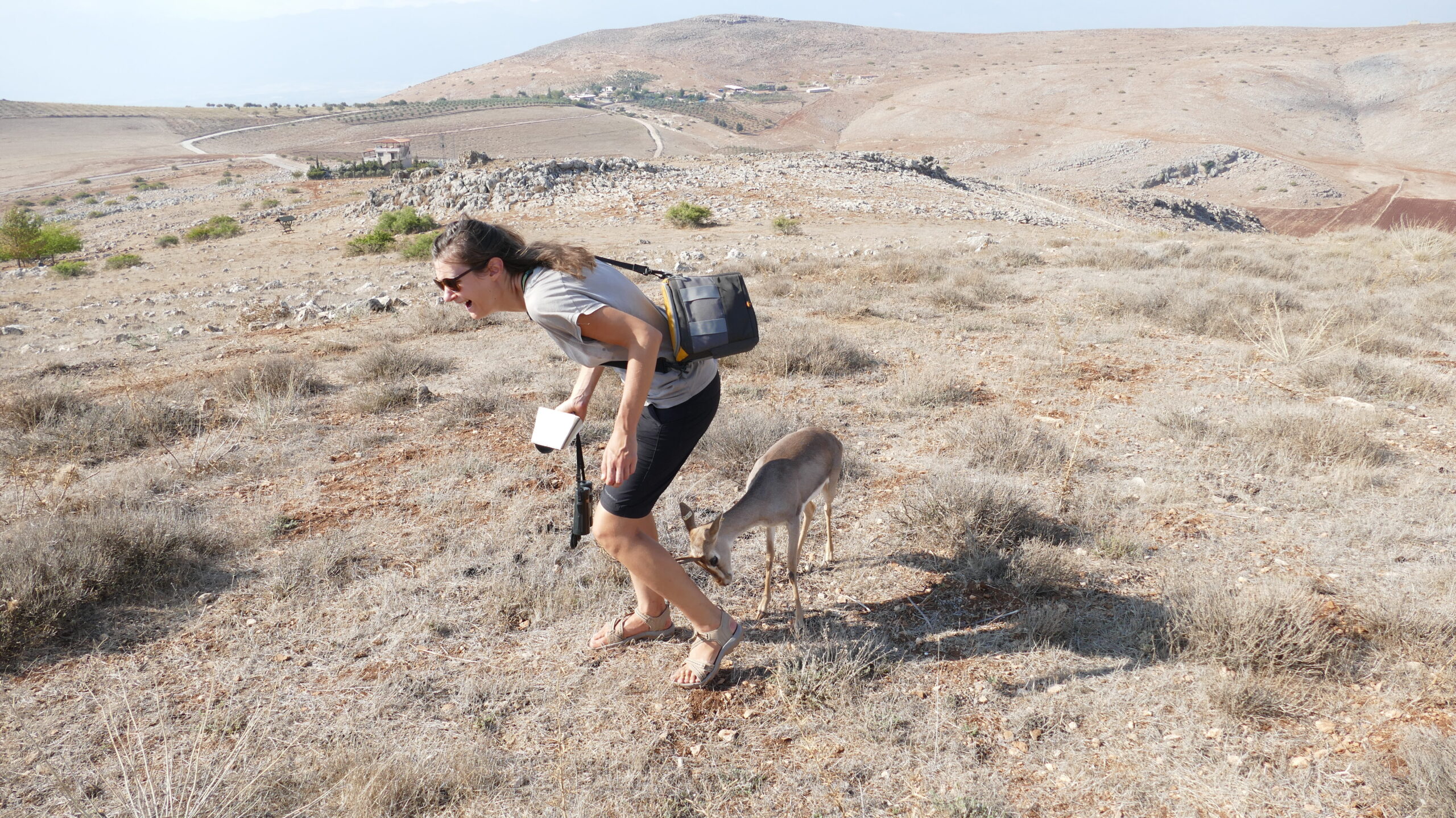
Countering the global trend
This is not only a crucial step for the Turkish population, but for the global population of the mountain gazelle. It used to be common all across the Arabian peninsula and the Levant. But throughout the centuries, hunting, habitat destruction and diseases transmitted by livestock erased most populations. Nowadays, there are only two populations: in Israel and Hatay. The Israelian population is currently still the biggest with around 3,000 individuals, but it has also been decimated from over 10,000 individuals by the hoof-mouth-disease.
On the other hand, the population in Hatay has grown from 150 in 2014 to 1,500 in 2022. This shows that protection and reintroduction can be successful within a few years. What is necessary are cooperation and firm actions by locals, authorities and NGOs. Hatay Tabiatı Koruma Derneği does all kinds of activities from monitoring, awareness raising, working with local shepherds and education to writing a species development every five years. They are supported by WWF Turkey with fundraising and public outreach. The DKMP runs the breeding center that is also used for educational activities like school visits. It also manages the protected area that includes a massive 125 km² and was declared in 2014 by the president himself. Now, a bilateral project with Israel is in preparation to coordinate efforts in both countries.
Cooperation is key
This rapid growth of the population makes it possible to extend the release of individuals from the breeding center to other provinces. Releases in Gaziantep and Adana are currently in planning. But of course, the gazelles still face threats. Hunting by humans is still an issue, especially when they cross the border into Syria. When it comes to predators, there are approx. 30 wolves within the current range, but many more stray dogs that form packs and hunt gazelles, which is a real problem. And in a dry steppe area, grazers always compete with livestock and agriculture. However, the gazelle mostly live on sparse, rocky areas, where they can graze alongside goats or sheep.
This makes shepherds another ally. They are physically closest to them and encounter them most often. Hatay Tabiatı Koruma Derneği utilises that by cooperating with them to monitor the population and threats. They provide them with binoculars and phones so they can inform the association about poachers or other threats. In addition, they gave them outdoor jackets as a small recognition for the demanding but meaningful work they do.
An uplifting story
It is great , for once, to hear a story of success where conservationists don’t fight hard to protect the last remnants of a population or habitat. Instead they achieved population growth at incredible speed supported by firm action by the government and clear plans for its expansion. Yaşar shares this optimism and says that so far they reached all goals. Nevertheless, his view is not focused on the past or even the near future. Instead, he emphasizes how important it is to think in large timeframes and plan for the far future:
“Don´t think for today. If you work to save today’s world, you cannot. But you can save tomorrow’s world. If you have good ideas, future generations will work for your dream.”


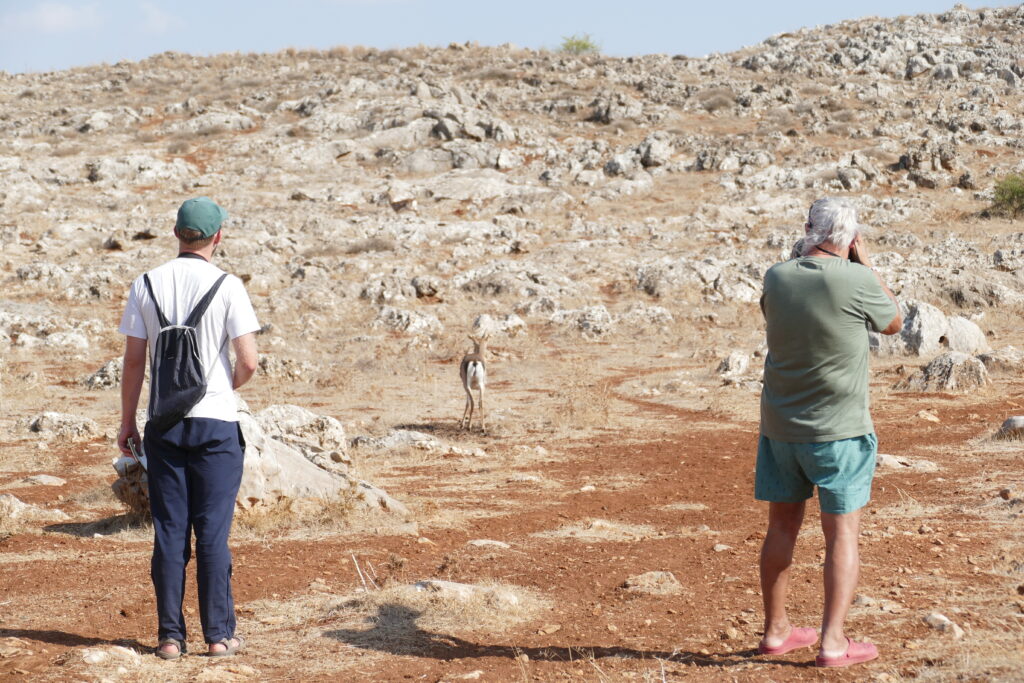
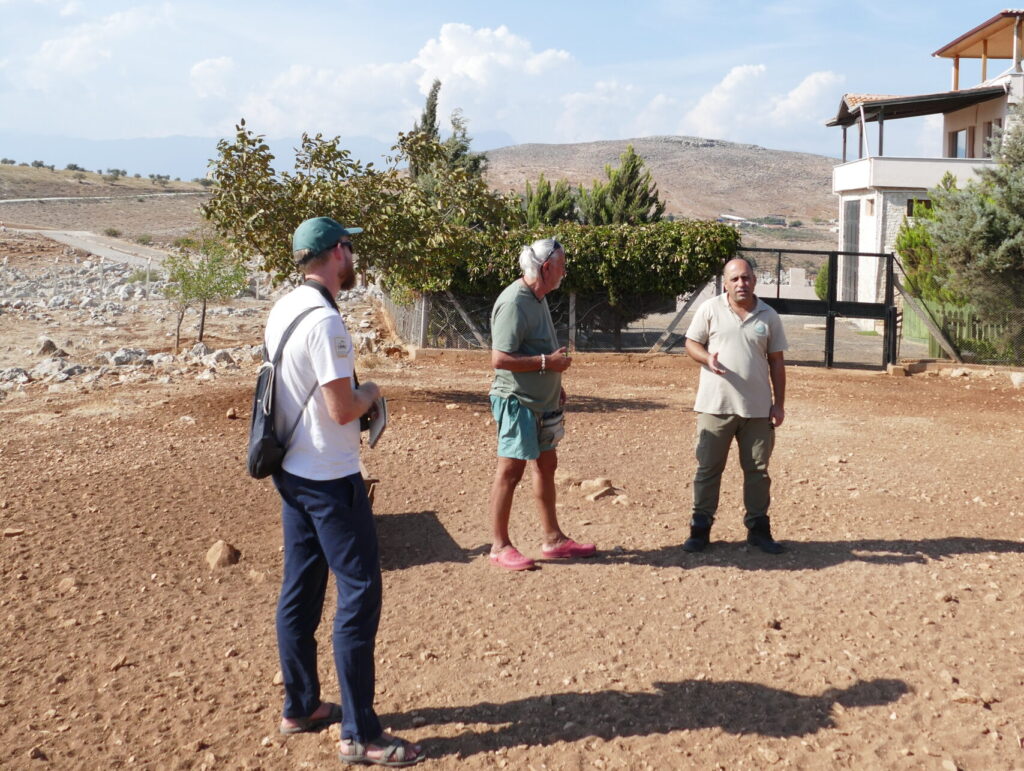


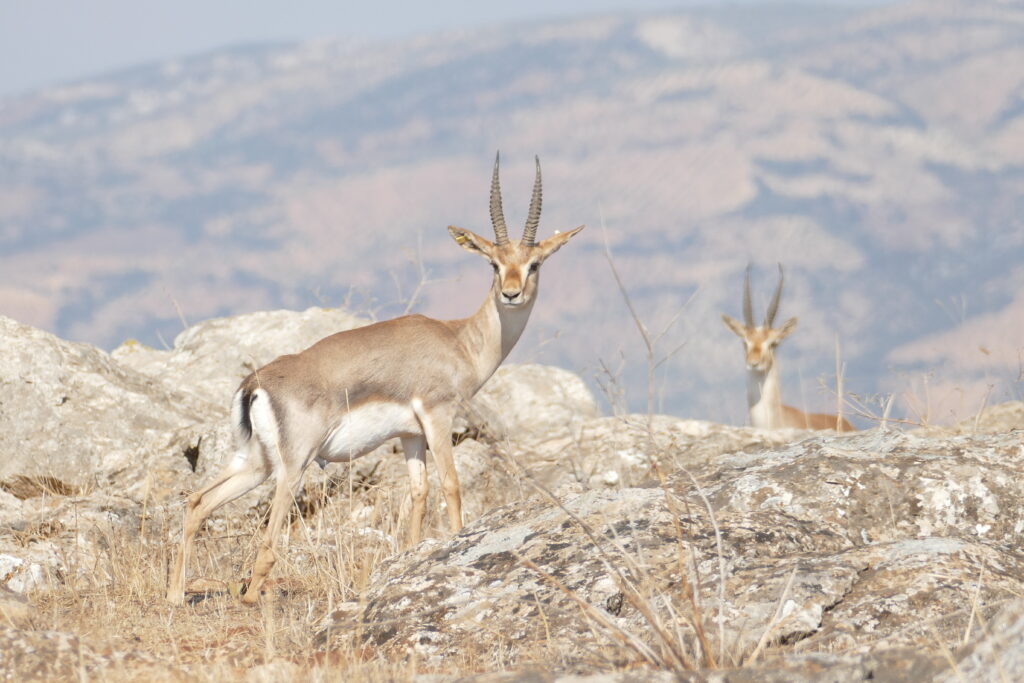
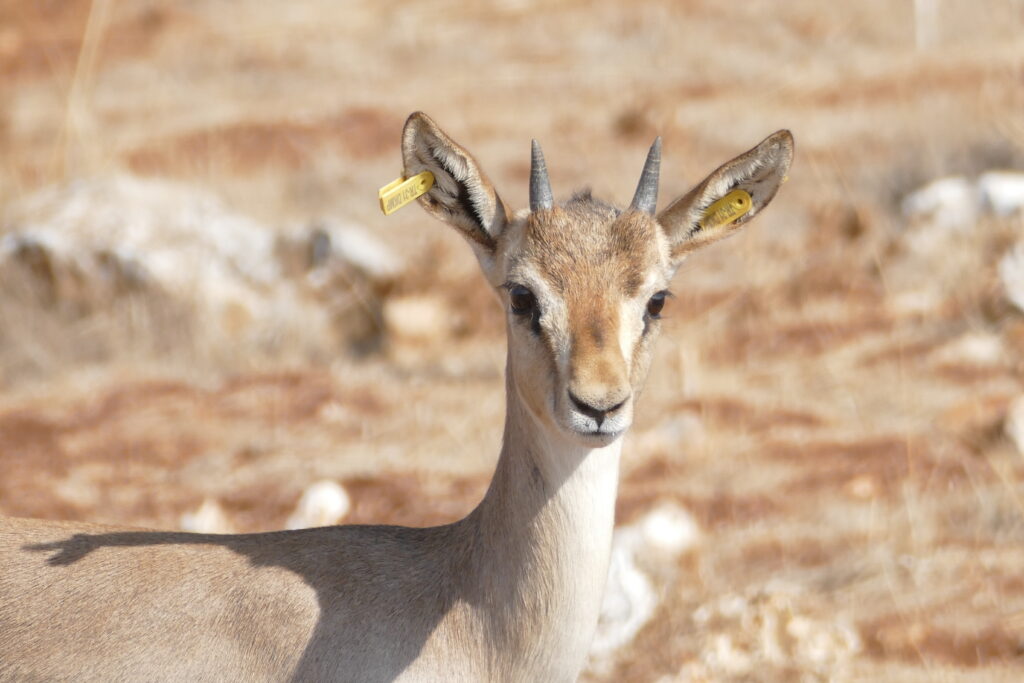
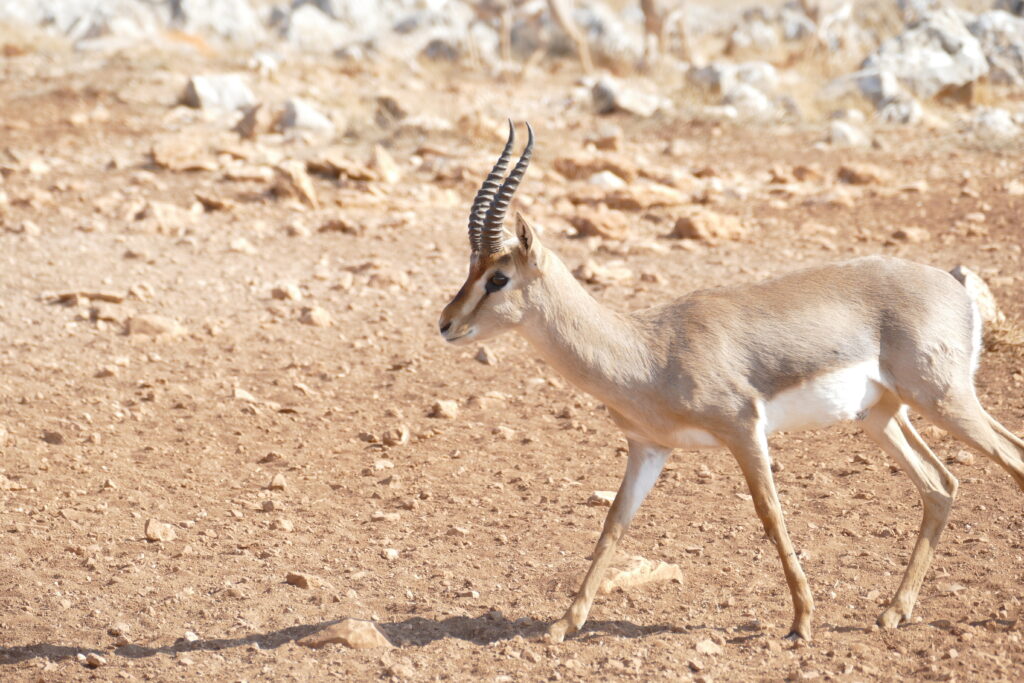
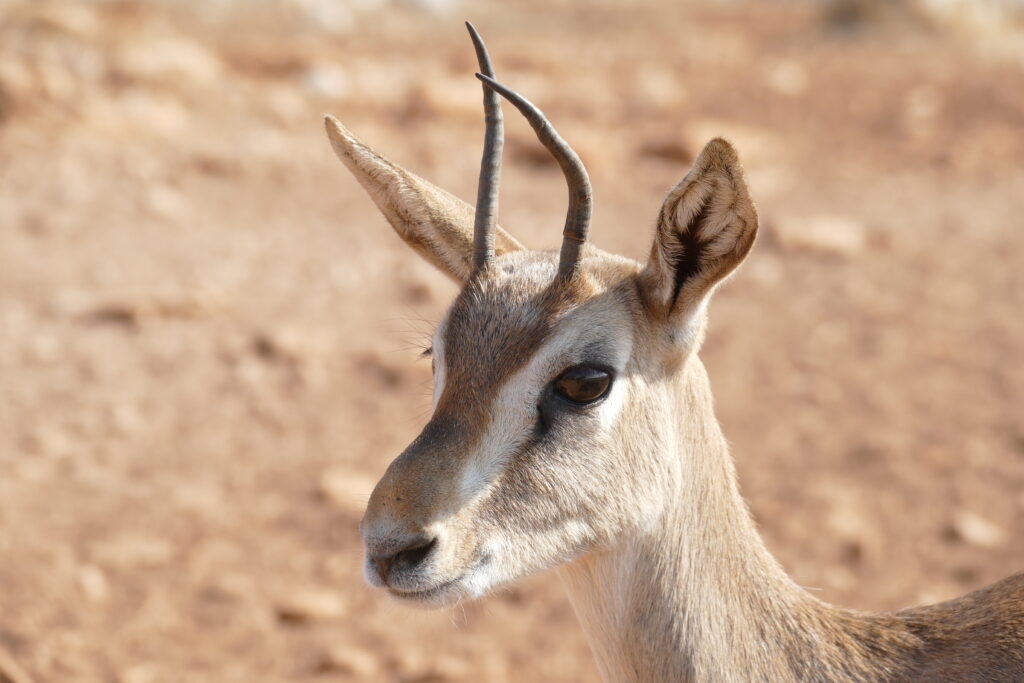
Pingback: The intricate web of nature protection in Hatay - biking4biodiversity.org
Pingback: The widely misunderstood striped hyena of Turkey - biking4biodiversity.org
Pingback: Quo vadis, Turkey’s nature? - biking4biodiversity.org